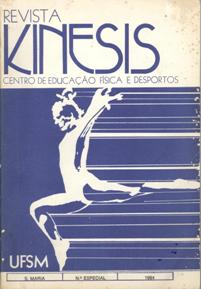Método parcial e método global: um estudo comparativo da aprendizagem do quipe de cabeça no solo e da saída da barra fixa em sublance
DOI:
https://doi.org/10.5902/2316546410348Resumo
O estudo visou analisar aspectos do processo ensino-aprendisagem atraves da aplicação dos métodos parcial e global, e comparar os resultados obtidos na aprendizagem do quipe de cabeça no solo da saída da barra fixa em sublance. Participaram da pesquisa vinte alunas que foram divididas em dois grupos experimentais. 0 grupo I aprendeu o quipe de cabeça através do método global e o sublance pelo método parcial. 0 grupo II aprendeu o quipe de cabeça pelo método parcial e o sublance através do método global. Concluiu-se que o número de alunas que aprenderam o quipe de cabeça pelo método global foi maior que o de alunas que aprendeu pelo método parcial. Para o sublance não se pode comprovar diferenças na aprendizagem através dos dois métodos. Na opinião das alunas, do global proporcionou maior satisfação, facilidade de aprender interesses. independente do elemento aprendido.Downloads
Downloads
Publicado
Como Citar
Edição
Seção
Licença
Os artigos deverão ser enviados em formato digital da plataforma SEER, através do endereço eletrônico: http://periodicos.ufsm.br/kinesis/index. Em caso de dúvida, entrar em contato com a equipe editorial através do e-mail kinesisrevista@ufsm.br. A autoria que publicar na Revista Kinesis concorda com os seguintes termos:
- Mantêm os direitos autorais e concedem à revista o direito de primeira publicação;
- Permitem e são estimulados a publicar e distribuir seu trabalho online (ex.: em repositórios institucionais ou na sua página pessoal) já que isso pode gerar alterações produtivas, bem como aumentar o impacto e a citação do trabalho publicado
- Em virtude de aparecerem nesta revista de acesso público, os artigos são de uso gratuito, com atribuições próprias, em aplicações educacionais e não-comerciais.







